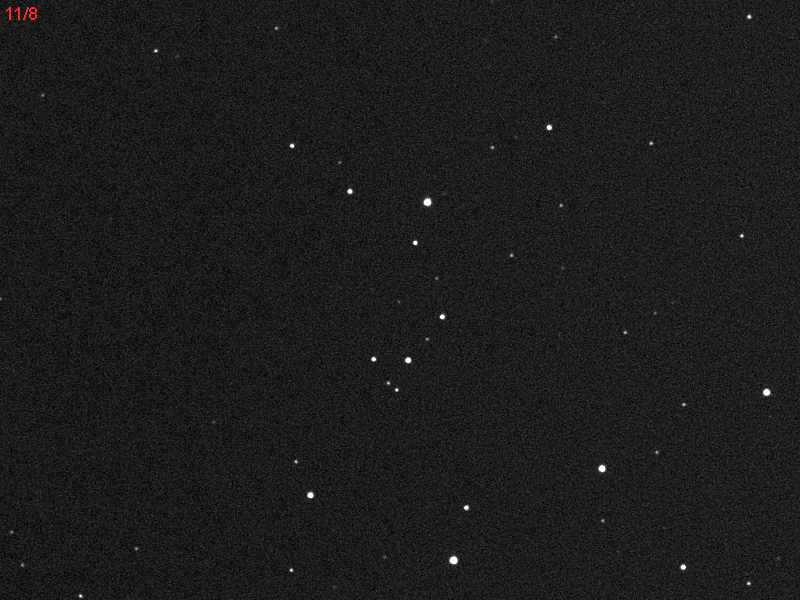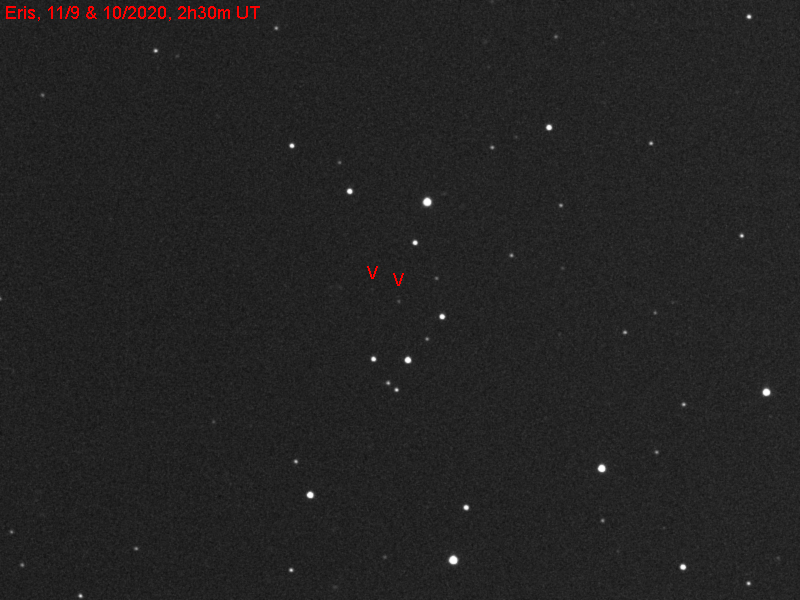

Telescope: Astro-Tech 8” f/8 Ritchey-Chretien, Orion Atlas EQ-G
Camera: ZWO ASI071MC Pro, -10C, Gain 200, Baader Mk III MPCC
Filter: Orion Imaging Skyglow Filter
Guide scope: Astro-Tech 60mm, Meade DSI Pro II, PHD
Exposure: 7x240s (11/8) & 11x240s (11/9), saved as FITS
Darks: 32x240s, saved as FITS
Flats: 32×0.2s, sky flats taken at dusk
Average Light Pollution: Red zone, Bortle 8, fair transparency
Lensed Sky Quality Meter: 18.5 mag/arc-sec^2
Stacking: Mean with a 2-sigma clip.
White Balance: Nebulosity Automatic
Software: Nebulosity, Deep Sky Stacker, Photoshop
I have wanted to try this for a long time and I have been waiting for a pair of nights with perfect transparency to give it a try. However, my window of opportunity is closing for this year so I decided to go ahead and give it a try, and much to my surprise… success! This is a composite of two images taken 24 sours apart at about 10:30pm EST on the evenings of Novermber 8th and 9th in Cetus. The tiny smudges near the center of this field are the dwarf planet Eris, one of the most distant objects in the solar system. Eris is currently 8.8 billion miles from the Sun, almost 3 times farther than Pluto. It takes sunlight over 13 hours to reach Eris, and another 13 hours for the feeble reflected sunlight to make the trip back to Earth. Eris is about the same size as Pluto and with a more reflective surface it is so cold out there that the surface is likely coated with frozen methane, but unlike Pluto the sunlight is so faint that it is unlikely that the surface has been darkened by the formation of tholins. Shining at an incredibly faint Mv 18.8 this is the faintest object that I have been able to photograph and identify from my backyard
Recent Comments